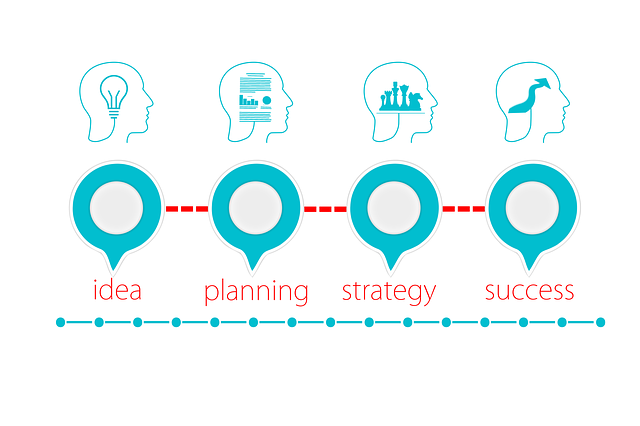We’ll increase conversions by
20-100+%
on your website.
Get a FREE Audit today
See how we can help your business increase conversion rates
Maximizing Market Demand: The Power Of Scarcity Marketing Strategies

Introduction
Market and individual demand curves is the lifeblood of any business. It drives sales, and demand curves determines pricing strategy, and ultimately impacts the bottom line.
Understanding market demand is crucial for businesses to succeed in an increasingly competitive landscape. One way to maximize market demand is through scarcity marketing strategies.
By creating a sense of urgency or exclusivity around a product or service, businesses can increase consumer desire and drive sales. In this blog post, we’ll explore the power of scarcity marketing strategies and how they can help businesses maximize their individual and market the service consumers demand both. So read on to learn more!
What Are Scarcity Marketing Strategies?
Scarcity marketing strategies are tactics used to create a sense of urgency and exclusivity surrounding a product or service, in order to increase demand and drive sales.

Definition And Examples
Scarcity marketing strategies are techniques used by businesses to create a sense of urgency and exclusivity around their products or services. By limiting the availability or time frame for purchase, companies can increase demand and drive sales. Examples include limited-time offers, exclusive membership programs, and limited edition products.
The psychology behind scarcity is that people tend to value things more when they perceive them as rare or difficult to obtain. Scarcity taps into our fear of missing out (FOMO) and encourages us to act quickly before we lose the opportunity. This emotional response can be harnessed by businesses through effective scarcity marketing strategies, resulting in increased customer engagement, brand awareness, and ultimately higher profits.
The Psychology Behind Scarcity
Scarcity marketing strategies work by tapping into the innate human desire for exclusivity and urgency. When we perceive something to be scarce or limited, our brains interpret it as being more valuable and desirable. This is why time-based scarcity, such as limited-time offers, creates a sense of urgency that drives consumers to take action before time runs out.
Quantity-based scarcity, on the other hand, works by using negative demand and creating competition among consumers for a limited quantity of products. This taps into our fear of missing out (FOMO) and motivates us to buy quickly before others snap up all the available stock. By understanding these psychological drivers behind scarcity marketing strategies, businesses can create campaigns that effectively increase the market demand curve and drive sales.
Understanding Different Types Of Scarcity Marketing Strategies

Learn the various types of scarcity marketing strategies, including time-based, quantity-based, exclusivity-based, and urgency-based scarcity. Find out how applying these tactics can help businesses increase demand and sales while improving brand awareness and customer experience. Keep reading to unleash the potential of scarcity marketing strategies for your own business!
Time-based Scarcity
One popular type of scarcity marketing strategy is time-based scarcity. This involves setting a limited timeframe for customers to make a purchase or take advantage of an offer. For example, offering a discount code that only lasts for 24 hours or promoting a flash sale that ends at midnight.
The psychology behind time-based scarcity is that it creates a sense of urgency and fear of missing out (FOMO) in consumers. By giving them a deadline, they are more likely to act quickly and make the purchase rather than waiting and potentially losing out on the deal altogether.
Businesses can benefit from this strategy by being full demand and boosting sales in a short amount of time total market demand, while also creating buzz around their brand and products. However, it’s important for businesses to be honest about the timing restrictions and not deceive customers with false deadlines or exaggerated urgency tactics.
Quantity-based Scarcity
Quantity-based scarcity is a strategy that involves creating an illusion of limited supply to increase demand. This strategy works by setting a limit on the quantity of goods or services available for purchase, thereby up demand and supply curve and making it seem like there’s high competition amongst potential buyers. For instance, a product may be marketed with “limited edition” labels that suggest its availability is restricted in some way.
One major advantage of quantity-based scarcity marketing strategies is that they create a sense of urgency among consumers who fear missing out on the chance to own something unique or exclusive. In addition, this type of marketing can lead to increased sales and revenue by encouraging customers to make quicker purchasing decisions before supplies run out. However, businesses must ensure their claims are genuine, as false scarcity tactics can harm their reputation and credibility in the long run.
Exclusivity-based Scarcity
Exclusivity-based scarcity is all about creating a sense of exclusivity around your product or service. By limiting access to what you offer, you increase the perceived value of it in the eyes of potential customers. This approach is often used by luxury brands, but it can work for any business that wants to create an air of exclusivity.
One effective way to use exclusivity-based scarcity is through membership programs or VIP clubs. By offering exclusive perks and benefits to members only, you create a desirable club that people want to be a part of. Additionally, limited edition products or services can also create this sense of exclusivity and drive sales as customers scramble to get their hands on them before they’re gone forever.
Urgency-based Scarcity
Urgency-based scarcity marketing strategy is a powerful tool to create a sense of urgency among potential buyers. This type of scarcity typically involves limited time offers or countdown timers that pressure customers into making quick purchasing decisions. The idea behind this approach is to tap into people’s FOMO (fear of missing out) and increase the perceived value of the product or service.
By creating a sense of urgency, businesses can benefit from increased demand, higher conversion rates, and improved customer loyalty. Urgency-based scarcity can also help companies find market demand and differentiate themselves in highly competitive markets by highlighting their unique selling proposition and creating a sense of exclusivity. However, it is crucial to balance this tactic with ethical practices and ensure that the time-limited offer does not mislead customers or compromise quality control.
Benefits Of Scarcity Marketing Strategies

Scarcity marketing strategies have numerous benefits, including increased demand and sales, improved brand awareness single consumer,, enhanced perceived value, and an improved customer experience.
Increased Demand And Sales
Scarcity marketing strategies can greatly benefit businesses by up demand schedule creating a sense of urgency among potential customers. By setting a limit on the availability market supply of a product or service, demand increases as consumers feel pressure to act quickly before it’s too late. This leads to higher sales and revenue for companies who effectively utilize scarcity tactics in their marketing campaigns.
Moreover, implementing scarcity marketing strategies enhances brand awareness and strengthens perceived value. Consumers are more likely to appreciate the exclusivity of a limited time offer or quantity-based promotion, which is market demand important in turn creates a positive association with the brand itself. This not only is demand function generates buzz around new products or services, but also builds loyalty among existing customers who value being part of an exclusive group with access to these privileges.
Improved Brand Awareness
Implementing scarcity marketing strategies can lead to improved brand awareness as it creates a sense of excitement and exclusivity around your product or service. By highlighting limited quantities or time constraints, consumers are more likely to pay attention and take action. This increased buzz can also lead to word-of-mouth marketing, as people share their positive experiences with others.
Additionally, by positioning your brand as high value and in-demand through scarcity tactics, you can differentiate yourself from competitors and establish a stronger brand identity. Consumers may come to associate your brand with quality and exclusivity, ultimately leading to increased loyalty and repeat business. Utilizing effective scarcity marketing strategies is an impactful way for businesses of all sizes to stand out in today’s competitive market while improving overall brand awareness.
Enhance Perceived Value

One of the significant benefits of scarcity marketing strategies is enhancing perceived value. Creating a sense of urgency or exclusivity around a product or service can increase its desirability, making it seem more valuable to potential customers. When customers believe that a product is rare or only available for a certain price point or limited time, they tend to attribute greater value to it and are willing to pay higher prices.
Scarcity marketing strategies can also help businesses differentiate themselves from their competitors by emphasizing unique features or benefits. By using market demand businesses creating the perception that their products are in high demand, businesses can position themselves as experts in their industries while increasing brand recognition and customer loyalty. Overall, implementing scarcity marketing strategies correctly can lead to increased sales and long-term profitability for businesses looking to maximize market demand.
Improved Customer Experience
Scarcity marketing strategies can also enhance the overall customer experience. By creating a sense of urgency or exclusivity around your product or service, customers may feel more compelled to make a purchase and feel like they are part of a select group. This creates a positive association with your brand and can strengthen customer loyalty.
In addition, scarcity marketing strategies can help businesses better understand their target audience’s needs and desires. Through market research and analysis of consumer behavior, businesses can tailor their messaging and offerings to appeal directly to their ideal customers. This personalized approach not only improves the customer experience but also increases the likelihood of repeat business.
Potential Risks And Challenges Of Scarcity Marketing Strategies

While Scarcity Marketing Strategies can be highly effective in creating buzz and increasing sales, it’s important to note the potential risks involved such as maintaining quality control and avoiding misleading customers. Interested in learning more about how to effectively implement these strategies? Keep reading!
Maintaining Quality Control
One of the potential risks of implementing scarcity marketing strategies is maintaining quality control. When businesses experience sudden surges in demand, it can be challenging to keep up with production and ensure that products and services are meeting the same quality standards as before. This can result in negative customer experiences, damage to brand reputation, and ultimately a decline in sales.
To avoid these pitfalls, businesses must invest in effective inventory management systems, monitor product quality closely, and have strict standards for suppliers and vendors. By emphasizing the importance of quality control throughout all stages of production and distribution, companies can maintain customer satisfaction while still maximizing market demand through scarcity marketing product pricing strategies.
Avoiding False Scarcity Or Misleading Customers
Scarcity marketing strategies can be extremely effective in driving demand and sales, but they also come with potential risks and challenges. One of these is the danger of creating false scarcity or misleading customers. This happens when companies falsely limit supply or use deceptive tactics to keep prices fall create a sense of urgency latent demand, which can ultimately damage their brand reputation.
To avoid such pitfalls, it’s important to maintain honest and ethical practices when implementing scarcity marketing campaigns. Companies should ensure that there is a genuine reason for any limitations on supply and demand, and that any messaging around scarcity is clear, transparent, and accurate. By taking this approach, businesses can successfully leverage the power of scarcity without compromising their integrity or credibility in the eyes of consumers.
Ensuring Ethical And Honest Practices
When employing scarcity marketing strategies, it’s important to keep ethical and honest practices in mind. Maintaining quality control is crucial in order to ensure customers are receiving the best product or service possible. Additionally, businesses should avoid false scarcity or misleading customers by creating a legitimate sense of urgency.
One way to mitigate potential ethical concerns is by focusing on customer experience. By prioritizing their needs and ensuring they feel valued, businesses can create loyal customers who will advocate for their brand. It’s also important for companies to follow through on promises made during their campaigns and ensure they are delivering what was advertised.
Overall, implementing scarcity marketing strategies requires careful consideration and planning in order to maintain honesty and transparency with consumers. By putting the needs of customers first, businesses can successfully boost demand while maintaining integrity in their messaging and practices.
Implementing Effective Scarcity Marketing Strategies

To successfully implement effective scarcity marketing strategies and calculate market demand, companies must first identify their target market demand research, audience and market trends, create compelling campaigns and messaging, and utilize technology and data analytics. Ready to learn more about how these strategies can drive demand for your business? Keep reading!
Identifying Target Audience And Market Trends
Identifying the target audience is a pivotal step in any marketing strategy, especially when utilizing scarcity tactics. By understanding and researching all the individual demands, demographics, interests, and behaviors of potential customers, marketers can tailor their messaging and campaigns accordingly. Additionally, tracking market trends can provide valuable insights into what products or services are in high demand.
To effectively identify target audiences and determine market demand and trends, businesses should utilize various tools such as social media platforms for social listening, conducting surveys or focus groups with potential consumers, conducting market research, and analyzing search engine data through Google Trends. By closely monitoring these sources of information, companies can gain a better understanding of their customer base and adjust their strategies accordingly to maximize market demand.
Creating Effective Campaigns And Messaging
When it comes to implementing scarcity marketing strategies, effective campaigns and messaging are key. It’s important to identify your target audience and market trends before creating a campaign that will resonate with them. Utilizing technology and data analytics can also help ensure that your message is reaching the right people at the right time.
Your messaging should focus on why your product or service is unique, valuable, and in demand. Highlighting limited availability or exclusivity can create a sense of urgency among potential customers. Keep in mind that overly aggressive tactics may turn off consumers, so finding a balance between persuasion and authenticity is crucial for successful implementation of scarcity marketing strategies.
Utilizing Technology And Data Analytics

Technology has changed the way businesses approach marketing strategies, including scarcity marketing. With the help of data analytics and automation tools, companies can now measure market and consumer demand accurately and identify patterns that can be used to maximize sales. By monitoring social media platforms, search engines, and other online sources using social listening tools or Google Trends, marketers can gain valuable insights into their target audience’s behavior and preferences.
A valuable tool in measuring market demand is conducting sensitivity analyses at different price levels. This technique uses mathematical models to simulate changes in consumer behavior based on price elasticity – how much consumers are willing to pay for a product at a given price point. By using market demand function determining the optimal price level through these analyses combined with technology’s assistance, businesses can both maximize profits while also satisfying customer demands for scarcity by pricing items higher than they otherwise might have been priced if this analysis calculating market demand was not conducted.
Measuring And Optimizing Success Of Scarcity Marketing Strategies

In this section, we’ll explore how to track the effectiveness of your scarcity marketing strategies and adjust them for maximum impact. Don’t miss out on these valuable insights that can help you increase demand and profits!
Tracking Metrics And Data
One of the most important steps in implementing a successful scarcity marketing strategy is tracking metrics and data. This involves closely monitoring how your campaigns are performing, including things like website traffic, click-through rates, and conversion rates. By collecting data on these key performance indicators (KPIs), you can identify which strategies are working best and make adjustments as needed to optimize for success.
Another important aspect of tracking metrics and data is analyzing customer behavior. By understanding how your target audience interacts with your brand, you can gain valuable insights into what motivates them to take action. For example, by tracking where customers are coming from when they visit your site or social media pages, you can determine which channels are most effective at driving traffic and adjust your marketing efforts accordingly. Ultimately, tracking metrics and data is essential for making informed decisions about how to maximize market demand through scarcity marketing strategies.
Analyzing And Adjusting Strategies
Once you’ve implemented your scarcity marketing strategy, it’s crucial to track its success and make adjustments as needed. This means analyzing data and metrics related to sales, customer engagement, and overall brand awareness. By doing so, you can identify what worked well and what didn’t in order to optimize future campaigns.
When making adjustments, it’s important to keep the integrity of your strategy intact. Don’t tinker with core elements that have proven effective without thoroughly testing the impact of any changes made. Remember that optimizing your strategy is an ongoing process that requires continuous monitoring and assessment. By staying vigilant about analyzing data and adjusting accordingly, you can ensure long-term success for your business through effective use of scarcity marketing tactics.
Conclusion
In conclusion, scarcity marketing strategies can be a game-changer for businesses looking to maximize market demand. By using the individual demand curve and creating a sense of urgency or exclusivity, companies can drive sales, enhance brand awareness, and improve perceived value.
However, it’s essential to avoid false scarcity or misleading customers and maintain ethical practices. Implementing effective campaigns through targeted messaging and technology can aid in tracking metrics and adjusting strategies to optimize success continually.
With careful planning and execution, businesses can tap into the potential market demand to further economic growth, increase profits total market, and grow their customer base. So don’t miss out on this valuable tool – harness the power of scarcity marketing strategies today!








